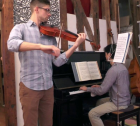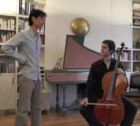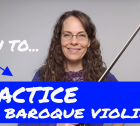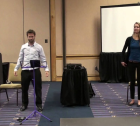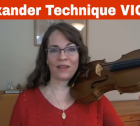Benefits and Research
The Alexander Technique attracts individuals wanting to improve mobility, ease postural discomfort, reduce chronic pain, and manage stress, while others seek lessons to advance their skills in the performing arts and athletic endeavours. Browse the menu lists below to learn more about how Alexander Technique can benefit you.
Use of resources
Please note that the content within the Research & Resources and Videos sections is provided only for general information purposes.
Use of Resources
Please note that the content within the Research & Resources is provided only for general information purposes. Many of the resources, such as books, are not free. Links to other websites or platforms are provided for viewers’ convenience, but ATC does not control or monitor them and accordingly cannot endorse their information or guarantee its accuracy and relevance. The use of content or links to third-party websites is at the viewers’ own risk. Viewers should contact an ATC-certified Alexander Technique teacher with any questions about the application of Alexander Technique to their specific issues.
String Instruments
- Benefits
- Resources
- Videos
- Testimonials
Alexander Technique helps string instrumentalists to utilize a fuller range of motion as they learn how to support their instruments for optimal movement. Once string players become aware of their habits, they learn that Alexander Technique offers them other options that minimize muscular tension and leads to improved control and quality of timbre.
Within the string family, the violinists and violists face a special challenge with an instrument that is tucked in close to the neck. To feel secure with their instrument violinists/violists often try to hold the violin/viola by sandwiching it between a harmful downward pressure of the chin, which locks the head and neck, and an upward squeezing of the left shoulder. It is no wonder that professional violinists/violists can suffer from carpal tunnel syndrome, thoracic outlet syndrome, tendonitis, or focal dystonia. The violinist/violist can find freedom in the neck and head and decompress their spines using the principles of the Alexander Technique. In turn, neck, shoulder or back pain can be reduced or eliminated.
While cello and double bass players do not have the same challenges of the violinist/violist, nevertheless, they can run into difficulties because of the greater length of the fingerboard and size of their instruments. These string players may round their shoulders and pull their heads forward and down when reaching for the higher notes. Or they may use unnecessary pressure when pressing down the strings with their left hand and excessive muscular effort to draw the bow across the strings. Alexander Technique can help these musicians to lengthen the arms as needed without impinging on the integrity of the back and to avoid over gripping the bowing hand.
General Articles
When the Mouse Meets the Elephant: a Manual for String Bass Players with the Application of the Philosophy and Principals of the Alexander Technique
“I became a student of the Alexander Technique during my fifteenth season with the Toronto Symphony Orchestra, following a performance-related injury. I realize now that the injury was a result of years of playing the viola using excess tension and poor postural behavior. For these past thirty-two years I have used the Technique to help my viola playing and I have used my viola to gauge the effectiveness of my use of the Alexander Technique. The two are symbiotic.
The study of the Alexander Technique has helped me in the following ways relative to the viola:
- Has enabled me to increase my ability
- No Backache
No Carpel Tunnel Syndrome - No Tendonitis
- No Frozen Shoulder
- Maintenance of Stature
- Good Overall Health
- Less tendency to be critical of colleagues, thus happier in the workplace
- Longer career and greater financial security
As a rule, the Alexander Technique teaches us that if we combine Inhibition and Direction with a clear understanding of the Primary Control we have a better chance when going into activity of doing so effectively and efficiently. This rule applies to the playing of the violin and viola no less than, and probably more than, many other endeavours.
To merely hold the instrument we expect to exert a certain downward pressure from our chin onto a chinrest. This is often is met by an upward movement of our left shoulder. The combination gives a sense of physical and mental security-until it inevitably doesn’t!
Dr. Barlow talks about the whole region at the base of the neck, front and back, as a “veritable maelstrom of muscular co-ordination. This co-ordination affects the shoulders, upper arms and the head itself. It is this area where poor use often begins.”
In playing, the violinist/violist/Alexander Technique student must utilize what they have learned about the principles of the Alexander Technique in activity. They should ask which of their assumptions about their use truly obtain. They should discover how the use of opposing forces will give them strength and security, not the pain often associated with overused muscles. They should learn to inhibit habitual responses and to send directions for the freeing of the neck and lengthening and widening of the torso. It’s not simple, but the rewards are great. ”
– Gary Labovitz, Violist, Toronto Symphony Orchestra



